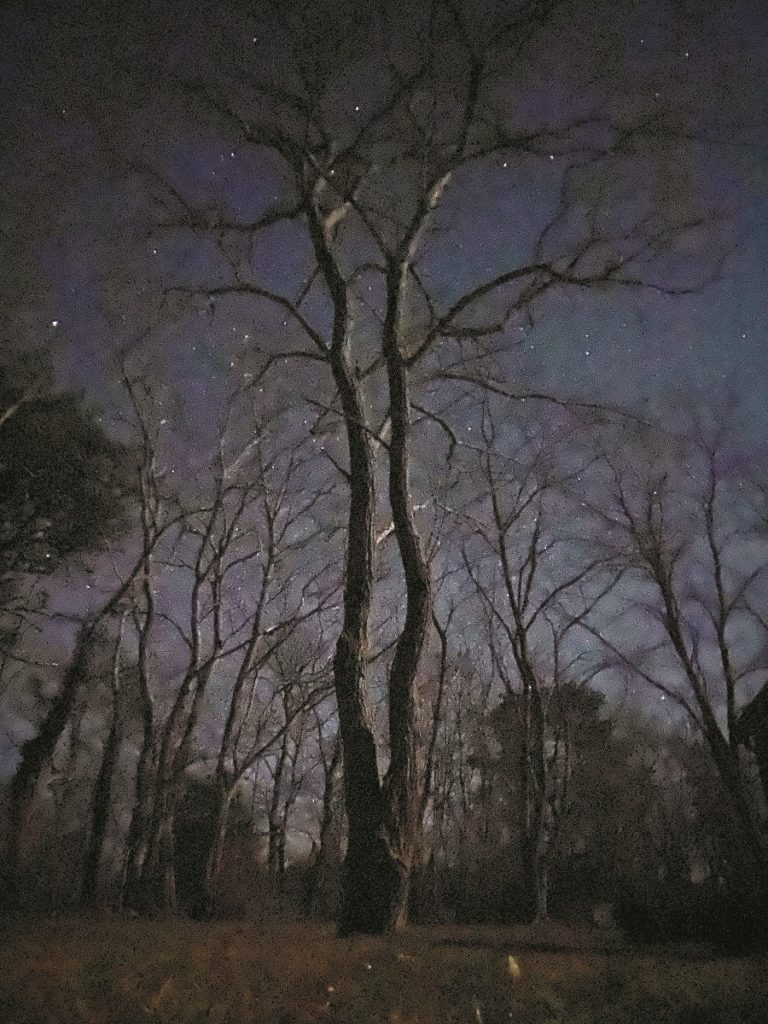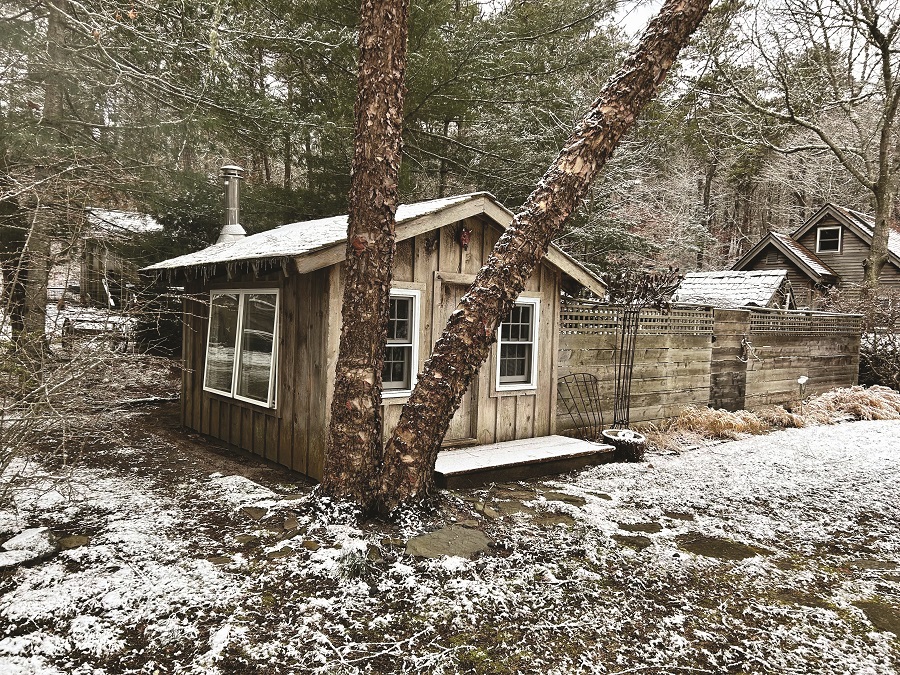When I was 12 years old, I moved into a cabin in my parents’ Wellfleet yard. It was down by the chicken coop, 10 feet by 12, made of pine and salvaged windows. It held a small wood stove and a bed. I slept in that little cabin for years, through all seasons, wrapping myself tightly in blankets during the coldest months.
There was no bathroom in the cabin, so I got used to waking up and wandering out into the night to the edge of the forest, my bare feet crunching the brittle, frosted grass. It was during this time, living in a way that drew me often into the night, that I got to know the magic of a moonlit winter night.

A few times each winter, when the sky was clear and the Moon was full, the entire outdoors would be washed in stunning brightness. The cabin, being a good part windows and open to the surrounding night, would be filled with it. It woke me up and pulled me from my bed, taut with curiosity, all tiredness left beneath the warm covers.
The moonlight was magnetic. This was a rare thing. Getting up to see it was not something to be questioned. It was the same as getting up for an eclipse or a meteor shower.
Moonlight is the sun’s light reflected back to Earth but simplified somehow. This light has missed the Earth and fallen on the dark, dusty surface of the Moon. From there, as it travels back through so much cold, open, soundless space, it seems to let go of its heavy reds and blues. It lands weightless on a sleeping Earth and settles in gently, like a dusting of snow on the curves of the landscape and the thin branches of the woods outside a tiny cabin.

Walking outside on those crisp and pale nights was like stepping into the stillness of a photograph. An old black-and-white with just a faded hint of color. I recall wanting to move slowly and silently in this fragile light, as if I had to be careful not to stir the dust or alter the moment in any way.
A photograph shows us the world the artist sees — or wants us to see. Its truth is not the one we are used to. The Moon does this, too, leading us into the world we think we know, but with different qualities illuminated. Here, in light too delicate to awaken color vision, the mind will appreciate the shapes of things instead, the outlines and textures, the contrast of light to shadow, the softest white and deepest black.
Daytime shadows are full of the ambient light of their surroundings. But nothing is darker than a Moon shadow. It is a void so complete in its lightlessness that it feels like empty space. Pass your hand through a Moon shadow and it ceases to exist. Only when the Moon’s light finds it again can you trust your hand is still there.
This is a place of shape and form. The Moon lights a leaf’s upturned surface, the frosted grass, the upward edge of a bent branch — these things now exist. All else may or may not be.



